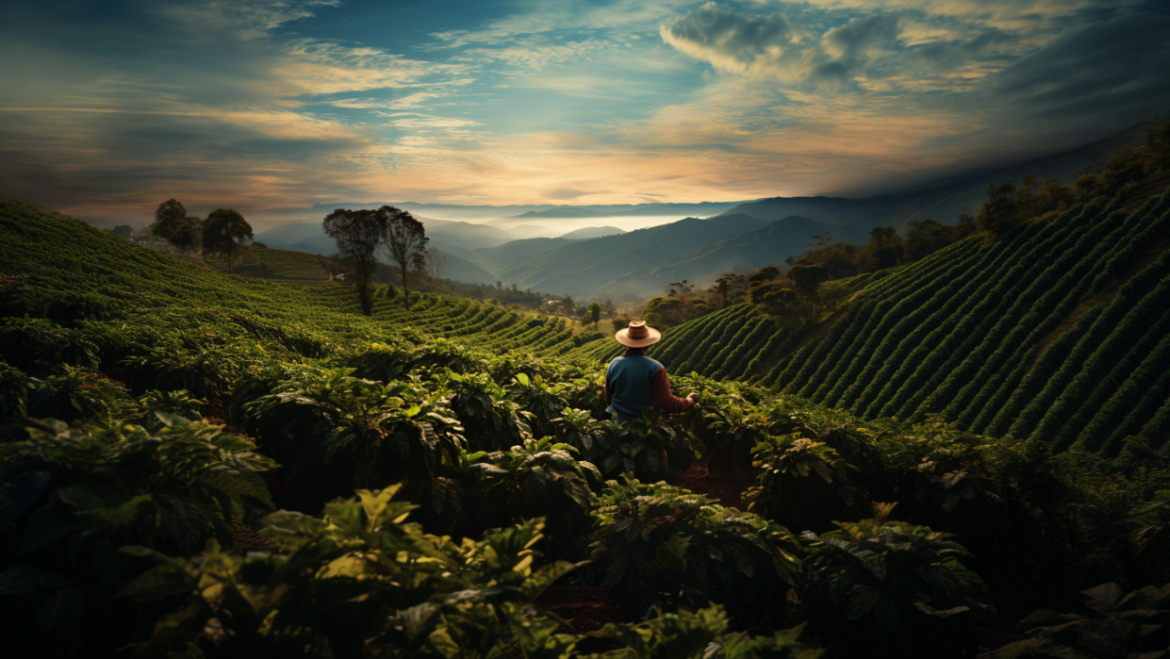Coffee, often known as 'liquid gold,' is a much-loved beverage that is savoured and appreciated by millions of people all over the world. Because of its robust, fragrant flavours and the stimulating shock of caffeine that it gives, it has become an essential component of our day-to-day routines. However, very few people ever stop to think about the trip that the coffee bean takes from the farm to the cup. Our exploration into the world of coffee starts where it all began: in the coffee growing areas that are renowned for producing beans of the highest quality. We explore the top coffee-producing places all around the globe by looking at them through the lenses of history, culture, and custom.
The Ethiopian Soils, Renowned for Their Richness

Ethiopia, the country where Arabica coffee was first cultivated, is home to a rich and varied coffee culture that is steeped in history. The coffee beans from each of the country's several coffee-growing areas, such as Sidamo, Yirgacheffe, and Harrar, each have their own distinctive flavour character. Coffee beans grown in Ethiopia, which are renowned for their wine-like and fruity qualities, are nurtured by the country's richer soils, high elevations, and optimum climatic conditions. These factors contribute to the growth of the coffee beans.
The Volcanic Slopes of Colombia

The coffee-growing areas of Colombia may be found tucked away in the Andes Mountains, where they benefit from rich volcanic soils and a climate that alternates between periods of rain and sunlight. The level of commitment shown by the nation to the production of Arabica coffee of the highest quality is unsurpassed. The beans grown in this region are renowned for having a flavour that is mellow and smooth, with just a trace of nuttiness, and are often complimented by an acidity that is just right.
The Pioneering Spirit of Brazil

For decades, Brazil has been a key participant on the international arena, mostly because to its role as a coffee producing powerhouse. The expansive landscapes of the Brazilian states of Minas Gerais, Sao Paulo, and Bahia offer the ideal conditions for the cultivation of a wide range of coffee varietals. The wide variety of flavour profiles that can be found in Brazilian coffee, which may vary from chocolaty to nutty, is often attributed to the country's coffee.
Sumatra, Indonesia's Bold Beans (Sumatran Bold Beans)

The coffee regions of Sumatra, located in the centre of South-east Asia, are famous for the strong and powerful beans that they produce. Because of the one-of-a-kind wet-hulling procedure that is used in this area, the resulting coffee has a robust flavour that is reminiscent of the soil. Both Sumatra Mandheling and Sumatra Lintong coffee are very desirable because to the low amount of acidity in both varieties as well as their robust and distinctive flavour profiles.
Yemen's Profound Historical Foundations

Yemen's traditional coffee growing regions have a long and illustrious history that dates back many centuries. In spite of the country's relatively modest size, the diverse topography of Yemen, which consists of hilly areas and secluded valleys, provides an ideal environment for the cultivation of coffee of an extraordinary quality. Coffee from Yemen is frequently recognised for having an acidity similar to that of wine, as well as a robust body and an intricate flavour profile.
Kona coffee from Hawaii has a very refined flavour.

The slopes of Mauna Loa in Hawaii, which are formed by volcanic activity, offer an ideal environment for the cultivation of Kona coffee, which is renowned for having a flavour profile that is both smooth and rich. The rigors care and centuries-old tradition that go into the manufacture of Kona coffee result in beans that are harmoniously acidic and nutty in flavour, thanks to the coffee's well-balanced flavour profile.
Conclusion
The history of coffee is a fascinating narrative that combines elements of nature, culture, and custom. The diverse flavours and fragrances that are contained inside each coffee bean provide information about the region that the bean was grown in. As we travel around the world's finest coffee growing areas, we dig into a story that is rooted in a diverse cultural history and the unrelenting quest of coffee perfection. By gaining a grasp of the fundamental characteristics of these illustrious coffee-growing locations, we go one step closer to appreciating the art and the craftsmanship that goes into the coffee that we pour into our cups each morning.




Add Comment